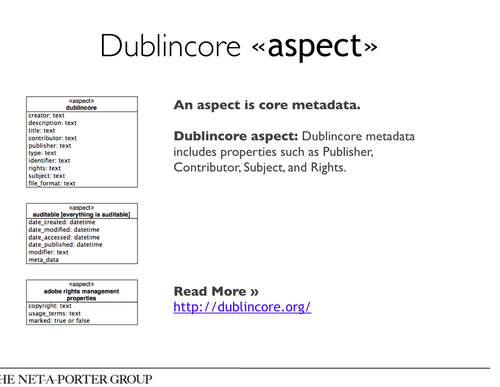
Role: User experience and content strategy, 2015
Brief: Design the NAP Group net-a-porter.com Enterprise content model
CMS: Alfresco Share, Spring Surf, Solr
Case: The Journal Men’s Magazine by MR PORTER
Tools: Omnigraffle Pro, Axure, Photoshop, PP
Industry: Ecommerce
Country: UK
Challenge: Separate the content from the display, ensure content modularity and ensure content portability
Primary team: Louise Campbell, Benjamin Veasey, Melita Shelly, Amy Derosier, Marianna Santanas, Romney Whitehead, Robert Morgan
View the full presentation» NAP Group Enterprise Content Model
★ What is the Net-a-porter Group content model?
The NAP Group content model is made-up of the defining files which state the structure of how data is stored within Alfresco’s repository.
It represents the content in a way that translates the intention, stakeholder needs, and functional requirements from the user experience design into something that can be built by developers implementing a CMS.
The content model helps make sure that the NAP Group content vision becomes a reality.
★ The Challenge
“As an organisation the NAP Group’s bias is towards deliver, deliver, deliver. Over the years the NAP Group has achieved huge success, as they add more brands, theOutnet.com, mrporter.com, and more recently expanded into APAC, achieving this growth, coupled with tight deadlines has paradoxically impeded business responsiveness.
From a systems perspective, when the business needs change, there’s often a need to share data. Each time such a need is identified, a new relationship was formed between systems. This approach resulted in tightly interconnected software that turns what should be relatively simple changes into enormous programs of work, creating a vicious cycle of complexity that is extremely hard to break out of.
A few years ago, the tech team undertook a review of how to build and deliver software and came to the conclusion that the architecture will need to move away from tightly coupled and proprietary models towards an open, interoperable architecture using open standards and open interfaces. NAP is implementing a platform-based operating model. Netflix, Amazon, and Gov.uk, among many others, have all built their success on the back of platforms.
NAP has developed a core technology infrastructure that others have then built upon, driving the success of the platform and meeting far more users’ needs than the original provider could have done on their own.
While NAP can learn from this model, it cannot move to this overnight as it’s a significant transition. NAP has many diverse and complex legacy systems and processes that are tightly coupled.
NAP has a long way to go in building out their core capability depicted above, but they have started making good progress and are already seeing emergent products, such as Search being developed upon their core and they have developed a core payments capability, shared by NAP’s brands and fulfillment systems.”
James Hoare – Chief Technical Architect at NET-A-PORTER.COM
User research plan and content strategy
I was hired as a content strategist to facilitate, execute and design the enterprise content model, with a core team of three.
★ Objectives
- Identify all content assets produced across the business
- Identify the source of content and how it’s currently delivered
- Design streamlined processes to support Alfresco
★ Deliverables:
- Content Audit Files: MR PORTER, TON, and NAP excel spreadsheets
- NAP Enterprise Content Model: rationale, goals, and diagram
- NAP Enterprise Content Model Diagram Master (editable in Omnigraffle Pro)
- MR PORTER Footer technical diagram
- Learning documents: page markup visuals for MR PORTER
- Definition of terms: content model diagram
- CMS – Alfresco Share wireframes
★ Content Audit Results/Findings:
- 17 Native Applications (in 4 different languages)
- 2 Digital magazine publications MR P’s Journal & NAP’s The Edit
- Plus 17 printed packaging items including Returns Policy, stickers, envelopes
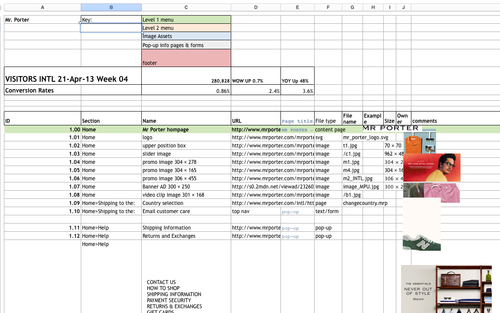
Fig 3. MR PORTER Content Audit
★ Project Plan/Solution
- Design the content model
- Develop a task analysis that specifies how editors will interact with the CMS (task flow)
- Define which tasks are most important, which will help us to prioritise back-end interface design work
- Shortlist
- Scope customisation
- ★ Enterprise Content Model Diagram – The Business Logic
Fig 4. Enterprise Model Diagram
★ Dublin Core – Meta Data: What is Dublincore
Fig 5. Dublincore Metadata
★ Objects, Classes, Fields & Metadata
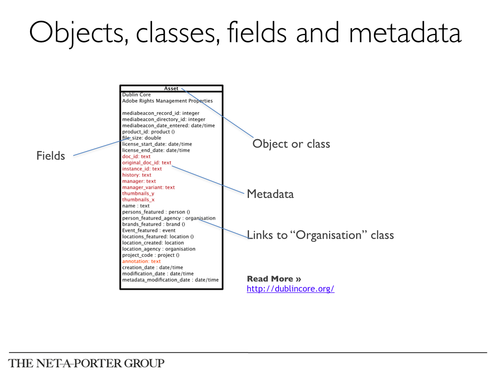
Fig 6. Objects, Classes, Fields
★ MR PORTER Homepage Content Model
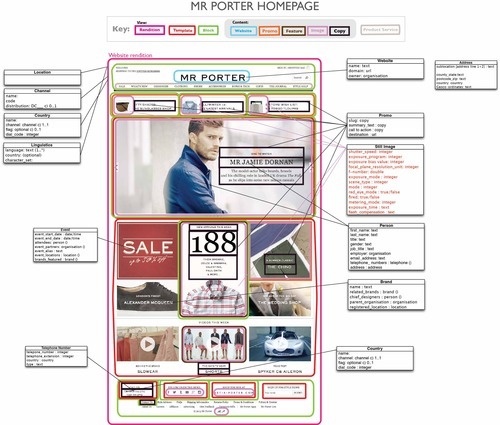
Fig 7. MR PORTER Homepage content mark-up
★ MR PORTER Footer
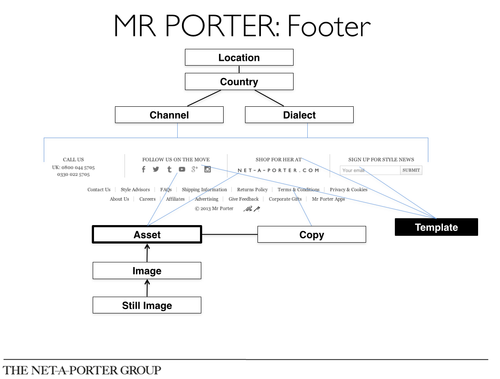
Fig 8. MR PORTER Footer Content Model
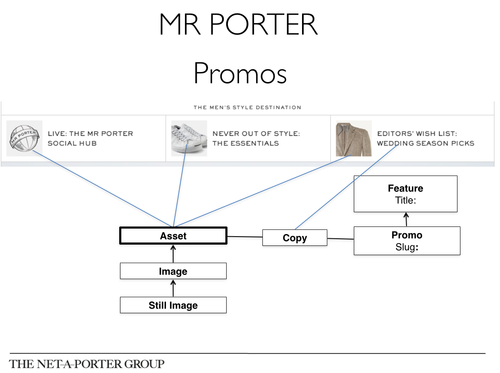
Fig 9. MR PORTER Promos Content Model

Fig 10. MR PORTER Editorial Content Model
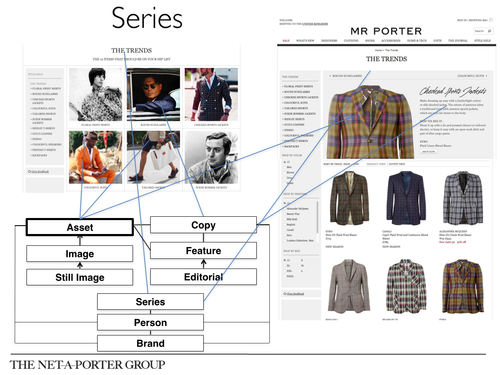
Fig 11. MR PORTER Series Content Model
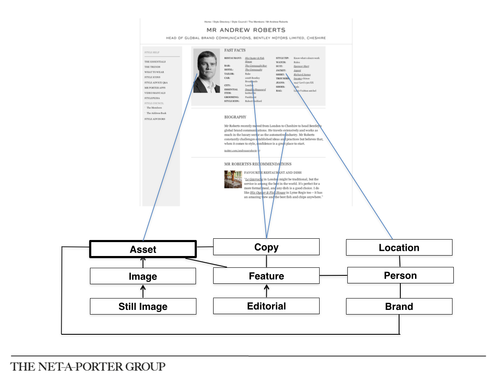
Fig 12. MR PORTER The Journal Content Model
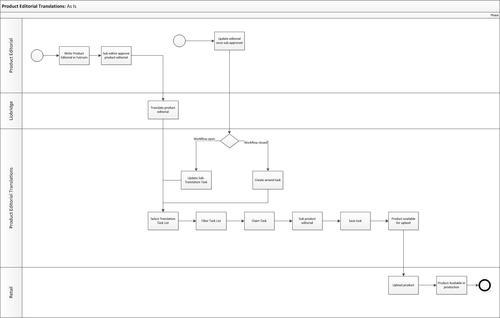
Fig 13. MR PORTER Editorial Translations Work flow Diagram (As Is)
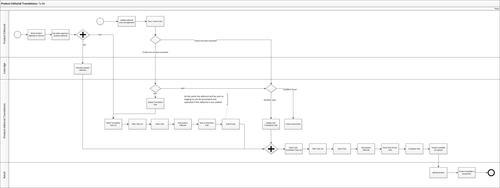
Fig 14. MR PORTER Editorial Translations Work flow Diagram (To Be)

Fig 15. MR PORTER Alfresco Share – Interface Mock-up
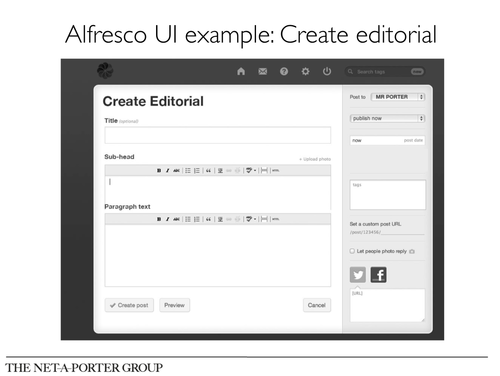
Fig 16. MR PORTER Alfresco Share – Create content – Interface mock-up
★ Results
- The ability to create assets once and publish them everywhere (COPE)
- Deliver digital experiences that translate seamlessly between smartphones, tablets, and desktop applications
- Build simple tools that enable non-technical teams (marketing and web production) to create and customise content for different channels, geographical territories, and brands
- Allow for Web Experience Management (WEM) solutions: engaging online experiences that cater to the unique needs of the customer
- Enable the NAP Group to target segmented users and deliver dynamic, personalised, and contextual rules-based content, measure customer sentiment, and provide consumable information across every digital interaction

